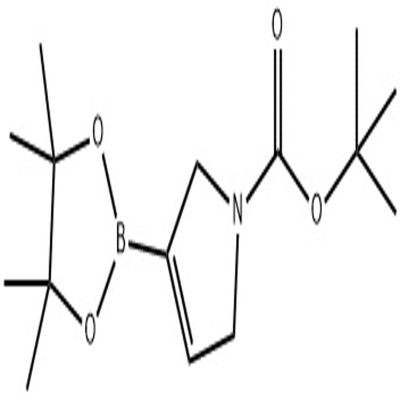-
Categories
-
Pharmaceutical Intermediates
-
Active Pharmaceutical Ingredients
-
Food Additives
- Industrial Coatings
- Agrochemicals
- Dyes and Pigments
- Surfactant
- Flavors and Fragrances
- Chemical Reagents
- Catalyst and Auxiliary
- Natural Products
- Inorganic Chemistry
-
Organic Chemistry
-
Biochemical Engineering
- Analytical Chemistry
-
Cosmetic Ingredient
- Water Treatment Chemical
-
Pharmaceutical Intermediates
Promotion
ECHEMI Mall
Wholesale
Weekly Price
Exhibition
News
-
Trade Service
Methyl 3-amino-6-bromopyrazine-2-carboxylate is an important intermediate in the synthesis of various pharmaceuticals, agrochemicals, and other chemical products.
The industrial synthesis of this compound can be achieved through various routes, some of which are outlined below:
- The Amine Hydrobromide Route: This is a well-established route for the synthesis of 3-amino-6-bromopyrazine-2-carboxylate.
The process involves the reaction of 3-aminopyrazine-2-carboxylic acid with sodium hydroxide to form the amine hydrochloride, which is then treated with hydrobromic acid to yield the bromide salt.
The bromide salt is then converted to the desired carboxylate using a reducing agent such as lithium aluminum hydride. - The Nitrile Hydrochloride Route: This route involves the reaction of 3-cyano-6-nitropyrazine-2-carboxylic acid with hydrogen chloride to form the nitrile hydrochloride, which is then treated with sodium hydroxide to yield the corresponding amine.
The amine is then treated with hydrobromic acid to form the bromide salt, which can be converted to the desired carboxylate using a reducing agent. - The Nitrite Route: This route involves the reaction of 3-aminopyrazine-2-carboxylic acid with nitric acid to form the nitrite salt, which is then treated with sodium hydroxide to yield the corresponding amine.
The amine is then treated with hydrobromic acid to form the bromide salt, which can be converted to the desired carboxylate using a reducing agent. - The Bromide Route: This route involves the reaction of 3-aminopyrazine-2-carboxylic acid with bromic acid to form the bromide salt, which can be converted to the desired carboxylate using a reducing agent.
In addition to the above routes, there are other ways to synthesize methyl 3-amino-6-bromopyrazine-2-carboxylate.
For example, it can be synthesized by treating 3-aminopyrazine-2-carboxylic acid with bromine in the presence of a Lewis acid catalyst such as aluminum chloride, or by reaction of 3-cyano-6-nitropyrazine-2-carboxylic acid with bromine in the presence of a Lewis acid catalyst such as ferric chloride.
Regardless of the synthesis route chosen, the synthesized methyl 3-amino-6-bromopyrazine-2-carboxylate can be used as an intermediate in the production of various chemicals and pharmaceuticals.
For example, it can be converted to 1,4-dihydro-2H-pyrano[2,3-c]quinoline-3-carboxylic acid, a compound used in the treatment of Alzheimer's disease.
It can also be converted to 2-[(2S)-2-[[2-[(4S)-4-(difluoromethyl)-2-oxo-1,3-oxazolidin-3-yl]-5,6-dihydroimidazo[1,2-d][1,4]benzoxazepin-9-yl]amino]-5-(trifluoromethyl)phenyl]propanamide, a compound used in the treatment of tuberculosis.
Overall, the synthesis of methyl 3-amino-6-bromopyrazine-2-carboxylate is a complex process that requires the use of various reagents and catalysts.
The choice of synthesis route depends







